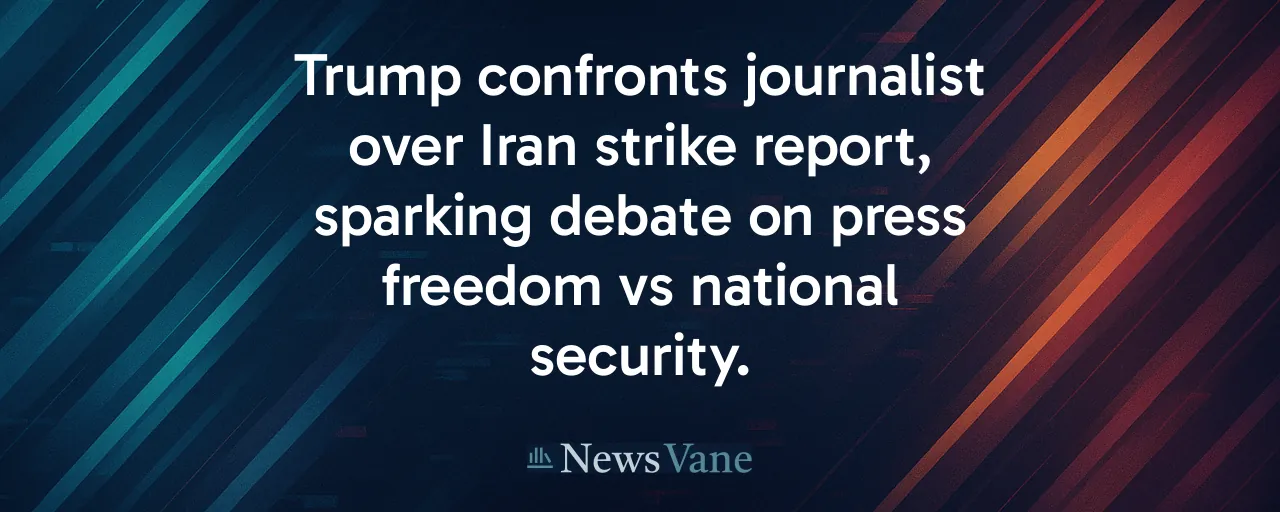A Fiery Exchange at the White House
On June 25, 2025, President Donald Trump stood before a room of journalists and pointed at CNN's Natasha Bertrand. He demanded her firing, calling her report on U.S. strikes against Iranian nuclear sites 'real fake' news. The outburst, captured on video and shared widely online, sent shockwaves through the media world. This personal attack also raised questions about the delicate balance between press freedom, national security, and public trust in journalism.
Bertrand's report cited a Defense Intelligence Agency memo suggesting the strikes delayed Iran's nuclear program by mere months. Trump's response was swift, accusing her of bias and urging the press to 'straighten out their act.' The incident, amplified by independent journalist Aaron Rupar, reignited a long-standing tension: how far can a president go in challenging the media without undermining democratic principles?
This clash reflects a broader struggle over who controls the narrative in an era of polarized news consumption. The stakes are high, as public confidence in journalism wanes and national security reporting faces scrutiny from all sides. What happens when a president's words target a single reporter? The answer lies in examining the principles at play.
The Heart of the Conflict
At its core, this incident is about trust, or the lack of it. Trump's criticism stems from a belief that some journalists selectively use sensitive information to paint an unfavorable picture. Bertrand's report, based on a leaked memo, sparked concerns about national security breaches. Supporters of the president's stance argue that premature disclosures can weaken U.S. leverage abroad and endanger lives.
On the other hand, journalists like Bertrand are tasked with holding power accountable. Her report, later corroborated by other outlets, shed light on the effectiveness of military actions, information voters need to assess leadership. Press freedom advocates warn that targeting individual reporters creates a chilling effect, discouraging sources from sharing critical insights. Both perspectives have merit, but they pull in opposite directions.
Data underscores the tension. Studies show that when leaders publicly criticize the press, public trust in media drops measurably, often accompanied by spikes in online harassment of journalists, particularly women. Intelligence officials note that leaks can disrupt operations, pointing to past cases where premature reporting altered diplomatic outcomes. The challenge is finding a path that respects both security and transparency.
Lessons From the Past
History offers context for this standoff. Trump's adversarial approach to the press has a long history; his 2016 campaign labeled media 'the enemy of the people.' In 2018, he revoked CNN reporter Jim Acosta's credentials, and in 2019, he threatened NBC's broadcast license. These actions echo earlier eras, like President Nixon's 'enemies list' targeting journalists, though Trump's public demands for firings are unusually direct.
Other presidents have clashed with the press, but the combination of personal attacks and regulatory threats sets this apart. During the Obama years, tensions with Fox News never escalated to calls for dismissals. The current approach risks tipping the balance of power toward the government, a concern raised by press freedom groups tracking a decline in U.S. rankings since early 2025.
Weighing the Stakes
The implications of this incident ripple beyond one reporter. National security reporting relies on sources willing to share sensitive information, often at personal risk. If journalists face public targeting, those sources may go silent, limiting public insight into defense policies. At the same time, unchecked leaks can harm strategic interests, as seen in cases where early disclosures tipped off adversaries.
Economically, newsrooms face mounting legal costs from lawsuits and advertiser pressures, which can strain resources for investigative work. Socially, escalating rhetoric deepens polarization, pushing audiences into echo chambers where distrust festers. For the public, the result is a murkier understanding of critical issues like foreign policy, which could dampen informed civic engagement.
Bridging the Divide
Solutions exist to ease these tensions without sacrificing core principles. A bipartisan working group between the White House and press could set clear rules for credentialing and briefings, ensuring access while addressing security concerns. Newsrooms could adopt stricter labeling for preliminary reports, signaling to viewers that intelligence assessments may evolve.
An independent panel to review leaks before publication could balance transparency with caution, giving outlets a way to vet sensitive stories. Legislation discouraging frivolous defamation suits, paired with clearer standards for accountability, could protect journalists while addressing concerns about errors. Expanding media literacy programs would empower citizens to navigate conflicting claims, fostering a more discerning public.
Looking Ahead
The clash between Trump and Bertrand is a symptom of a deeper challenge: rebuilding trust in institutions. Journalism, at its best, informs and clarifies, and it grapples with perceptions of bias. Governments, tasked with protecting national interests, resist overreach that silences scrutiny. Both sides share a responsibility to prioritize the public good.
The path forward hinges on dialogue, not ultimatums. By fostering transparency and accountability, stakeholders can strengthen the delicate balance between a free press and a secure nation. The public, as the ultimate beneficiary, deserves no less than a system where truth can thrive without fear.
This moment is a test. Will it deepen divisions, or will it spark a renewed commitment to principles that underpin democracy? The answer depends on the choices made now, by leaders, journalists, and citizens alike.
